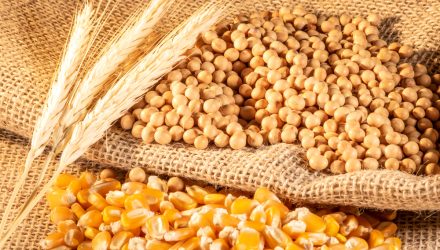Every financial trade has a party and a counterparty on the opposite end of the spectrum. In the case of agricultural commodities, hedge funds and farmers find themselves on opposing sides.
The S&P GSCI Agriculture index has fallen about 20% within the past year, underscoring the weakness in agricultural commodities prices as bullishness has been rapidly evaporating after prices surged during Russia’s invasion of Ukraine in 2022. Furthermore, a supply glut of corn, wheat, and soybeans are keeping hedge funds bearish.
“Hedge funds and other speculators have accumulated a net short position of 546,000 futures contracts across the three crops, the largest negative bet in nearly 20 years, according to the latest figures from the US Commodity Futures Trading Commission,” based on a Financial Times report.
However, farmers are also adding positions in agricultural commodities, but on the hope that prices will eventually rebound. While farmers will strategically purchase short contracts as a hedge against falling prices, they’re also holding on to grains.
“Farmers are typically short in the futures market, because they lock in prices for future crops to hedge against price drops. Now, though, they are holding on to grain and betting on prices rising,” the FT report confirmed.
Agricultural Exposure in One Fund
Retail investors can also buy the current dip in ag commodities prices using the Teucrium Agricultural Fund (TAGS). Rather than have separate positions in various commodities, TAGS can capture it all and provide broad-based exposure.
Given its low 0.13% expense ratio, the fund offers a compelling option. It is an ideal way for ingress into agricultural investing by way of the unique fund of funds structure inherent in TAGS.
Because ag commodities can offer uncorrelated exposure to the broad market, TAGS offers a perfect complement to a traditional 60/40 stock/bond portfolio for diversification, all in the convenience of one dynamic fund. A combination of funds add exposure to corn, wheat, soybeans, and sugar.
Traders or long-term investors can focus on the fund for broad-based exposure or the individual funds for a more focused, concentrated approach in specific commodities. For the long-term investor willing to ride out the current downtrend, patience will continue to be key. If broad commodities continue to trend lower, investors can subsequently buy the dips and add to their ag commodities portfolio.
Short-term traders can also use TAGS to play the volatility of ag commodities prices, particularly when prices push higher. Should the current trend reverse, traders can get ahead of the move with TAGS.
The funds featured in TAGS:
- Teucrium Corn Fund (CORN)
- Teucrium Wheat Fund (WEAT)
- Teucrium Soybean Fund (SOYB)
- Teucrium Sugar Fund (CANE)
For more news, information, and analysis, visit the Commodities Channel.


